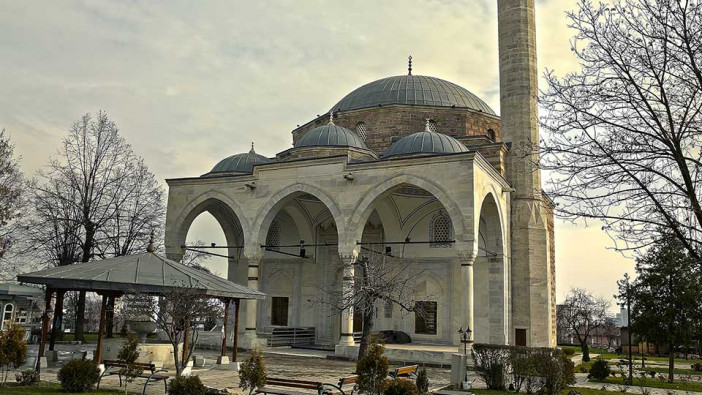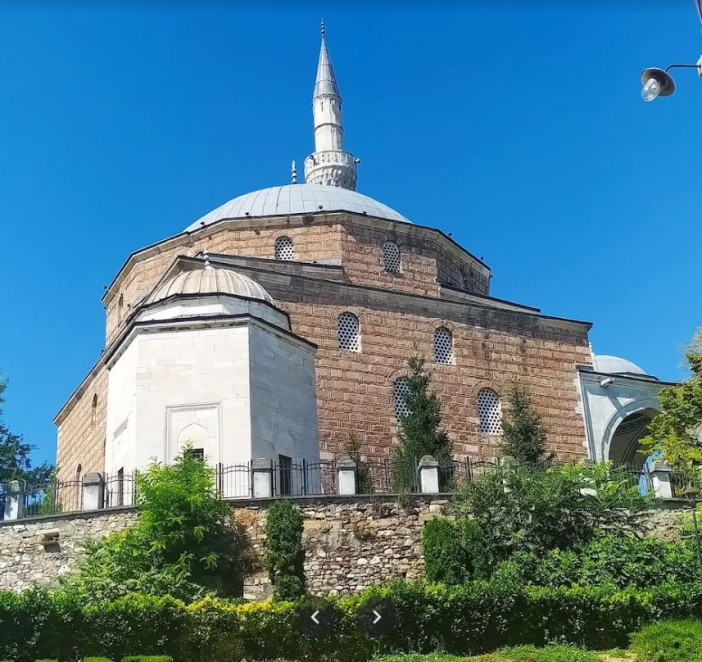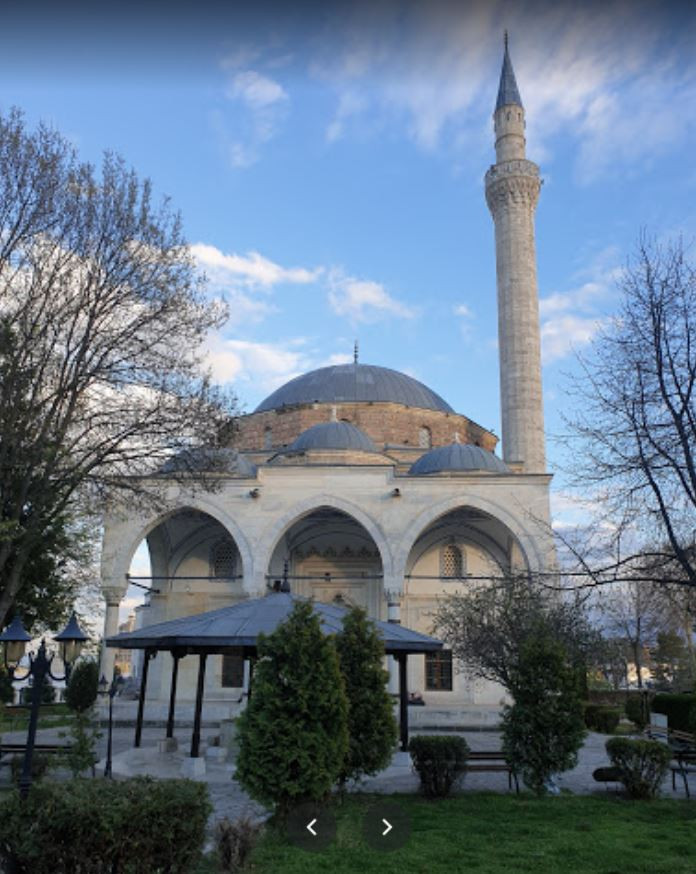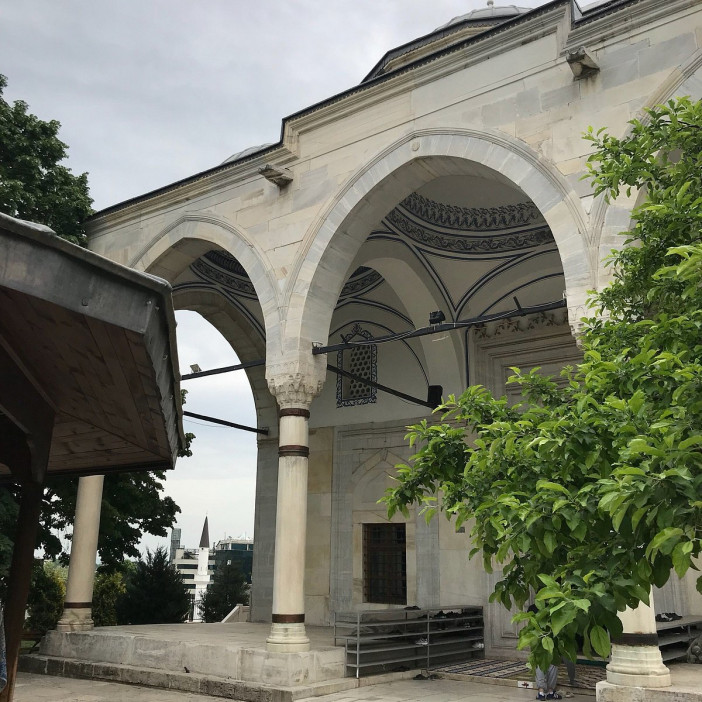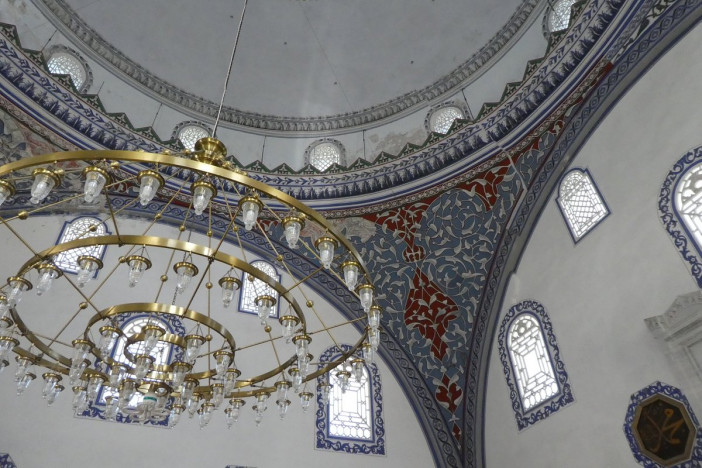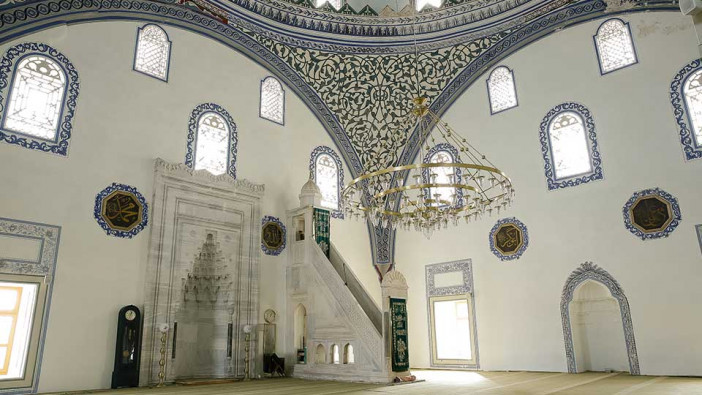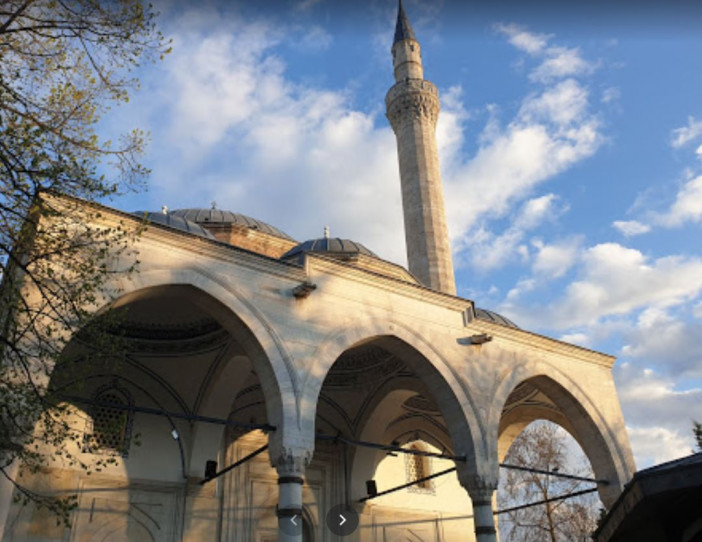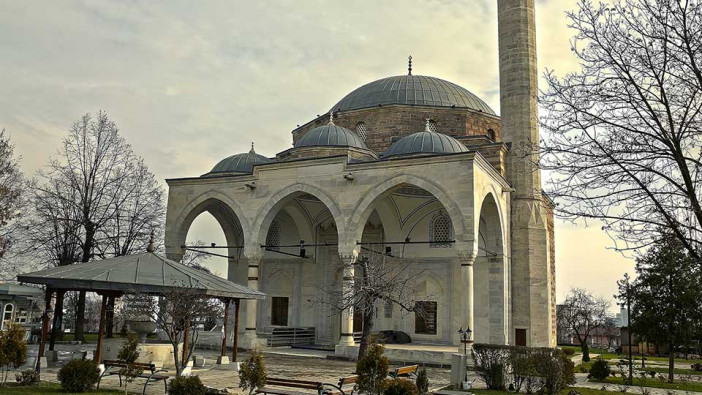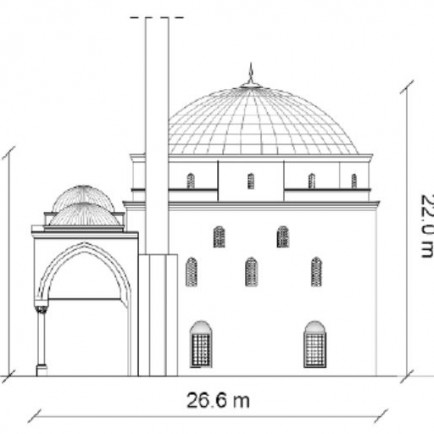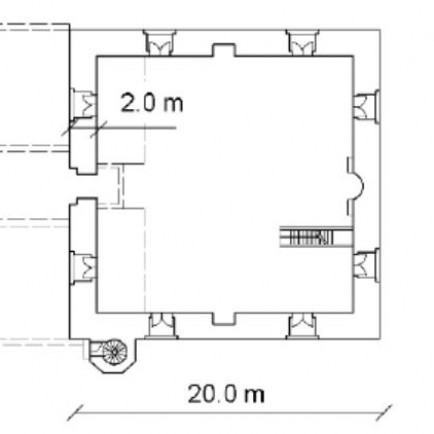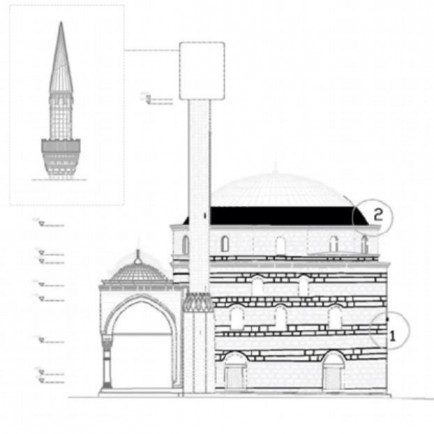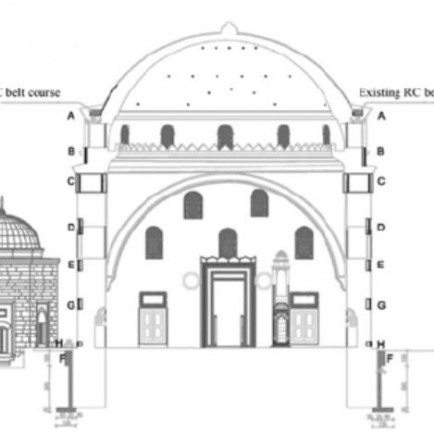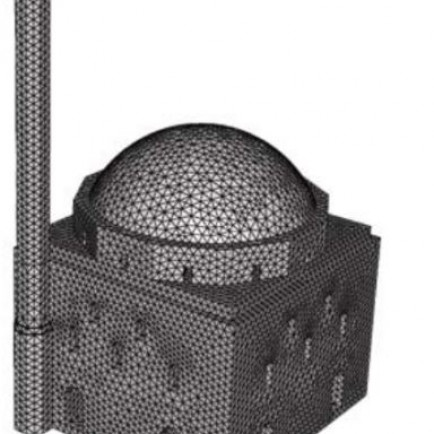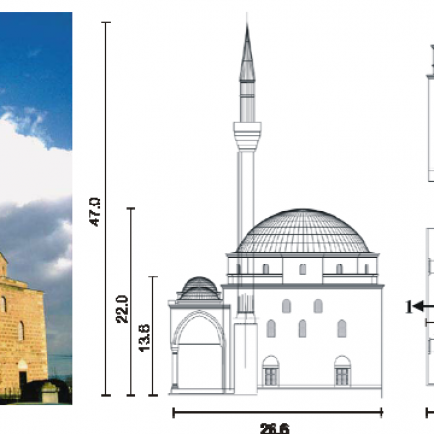Mustafa Pasha Mosque
History
. The structure stands on a plateau above the old bazaar, built in 1492 by Çoban Mustafa Pasha, who later became vizier on the court of Sultan Selim I (1512-1520).[1] The mosque is largely intact from its original state, and no additions have been made through the years. The body of Umi, the daughter of Mustafa Pasha, is entombed in the türbe next to the mosque.
A five-year renovation of the mosque, funded by the Turkish government, was completed in August 2011
Urban and Architectural
The building of the mosque is a characteristic representative of the early Constantinople architecture. Its base is square and is covered by a dome, the diameter of which is 16.3 m. The dome was built on pillars which are decorated with arabesques and on its left side motifs from the time of the mosque construction are painted, while on its right side there are newer ones with no particular artistic value. The building is walled with riveted stone and two rows of bricks. The entrance to the mosque is through the porch, which is made of white marble, and in front of it are four marble columns connected with semicircular arches.
This whole part is covered with three small domes. The 47 m high minaret is elevated to the northern part of the mosque and is built from a crushed limestone. Inside the mosque there is a prayer space, on the southeast part of which there is a mihrab, from which the odza (hoca) reads the Quran. To the right of the mihrab there is a platform (mimber), from which the prayers are read. In the circular space with arabesques, the names of Muhammad and Allah are written in the east and west. In the south and north those on the khalifates: Evubekir, Omer, Osman and Ali. Immediately above the entrance there is a gallery (mehvil).Within the mosque there is also a turbe, where Mustafa Pasha was buried in 1519, the sarcophagus of his daughter Umi, fountain in front of the entrance of the mosque, funeral ornaments and remnants of the former imaret and madrassa.
Description
is an Ottoman-era mosque located in the Old Bazaar of Skopje, North Macedonia
References
https://en.wikipedia.org/wiki/Mustafa_Pasha_Mosque
https://macedonia-timeless.com/eng/about/about/did-you-know/mustafa-pasha-mosque
Details
Location
Fort Kale, MK MK, Skopje 1000, North Macedonia
Architect Name
Year of Build
1492
Area
400m2
Drawings
Map
History
. The structure stands on a plateau above the old bazaar, built in 1492 by Çoban Mustafa Pasha, who later became vizier on the court of Sultan Selim I (1512-1520).[1] The mosque is largely intact from its original state, and no additions have been made through the years. The body of Umi, the daughter of Mustafa Pasha, is entombed in the türbe next to the mosque.
A five-year renovation of the mosque, funded by the Turkish government, was completed in August 2011
Urban and Architectural
The building of the mosque is a characteristic representative of the early Constantinople architecture. Its base is square and is covered by a dome, the diameter of which is 16.3 m. The dome was built on pillars which are decorated with arabesques and on its left side motifs from the time of the mosque construction are painted, while on its right side there are newer ones with no particular artistic value. The building is walled with riveted stone and two rows of bricks. The entrance to the mosque is through the porch, which is made of white marble, and in front of it are four marble columns connected with semicircular arches.
This whole part is covered with three small domes. The 47 m high minaret is elevated to the northern part of the mosque and is built from a crushed limestone. Inside the mosque there is a prayer space, on the southeast part of which there is a mihrab, from which the odza (hoca) reads the Quran. To the right of the mihrab there is a platform (mimber), from which the prayers are read. In the circular space with arabesques, the names of Muhammad and Allah are written in the east and west. In the south and north those on the khalifates: Evubekir, Omer, Osman and Ali. Immediately above the entrance there is a gallery (mehvil).Within the mosque there is also a turbe, where Mustafa Pasha was buried in 1519, the sarcophagus of his daughter Umi, fountain in front of the entrance of the mosque, funeral ornaments and remnants of the former imaret and madrassa.
Description
is an Ottoman-era mosque located in the Old Bazaar of Skopje, North Macedonia


